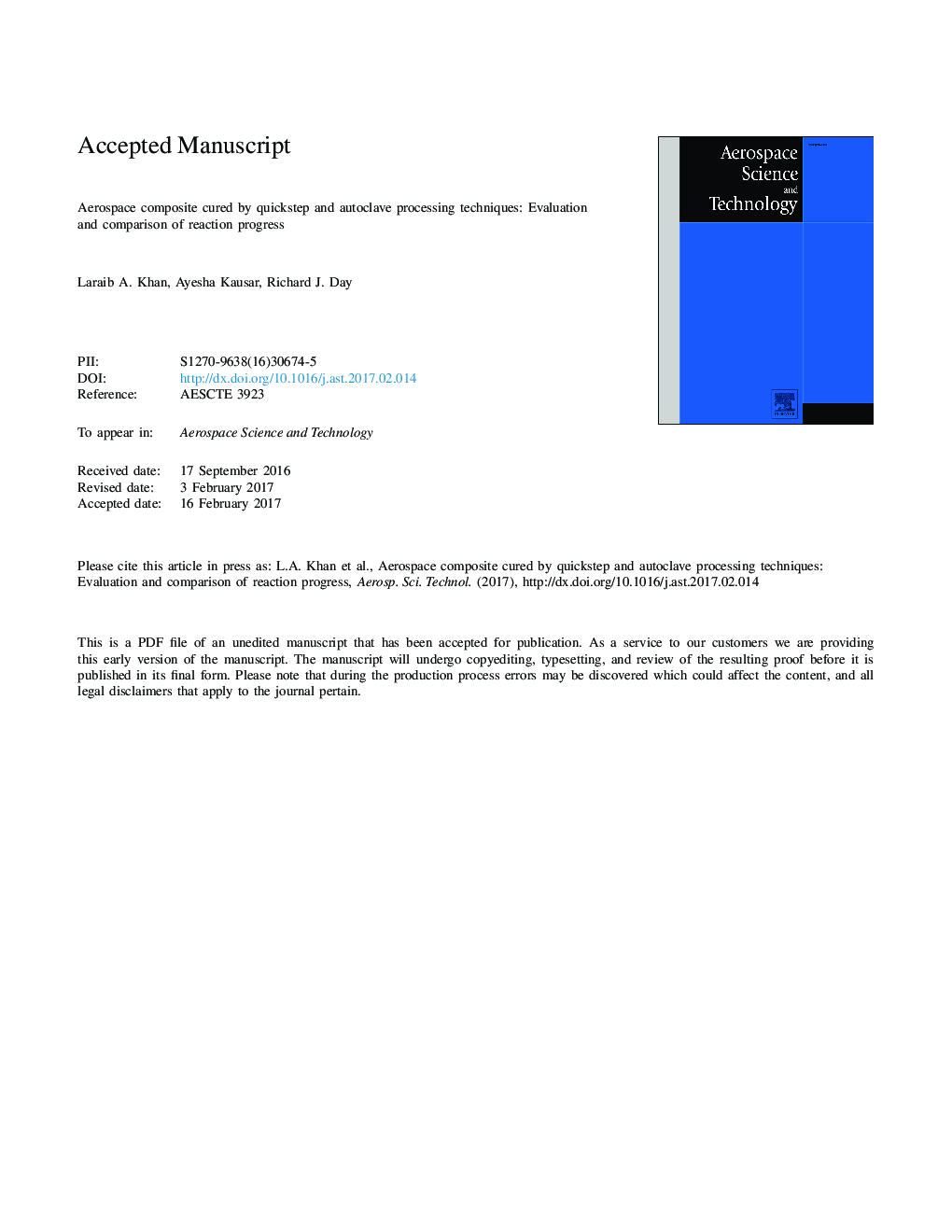| Article ID | Journal | Published Year | Pages | File Type |
|---|---|---|---|---|
| 5472978 | Aerospace Science and Technology | 2017 | 21 Pages |
Abstract
Quickstep is relatively a new technique for aerospace composite processing. Thermoset resins (prepregs) have been frequently designed by autoclave method requiring low ramp rate curing of 2-3 Kâminâ1. However, ramp rate up to 15 Kâminâ1 has been achieved via Quickstep processing. This technique allows alteration in chemo-rheology of resin system and so influences the reaction progress. In this attempt, Fourier transform infrared spectroscopy (FTIR), differential scanning calorimetry (DSC), and dynamic mechanical thermal analysis (DMTA) were used to monitor the cure progress of 977-2A epoxy resin and carbon fiber reinforced composite. The curing reaction progress of 977-2A epoxy/carbon fiber was considered for the first time by comparing Quickstep processing and autoclave method. According to DSC results, the reaction progress in Quickstep technique was comparable to that of autoclave curing. Moreover, DMTA of Quickstep cured samples showed increase in glass transition temperature (Tg) due to increased cross-linking density at greater hold time (upper cure temperature). FTIR was used to monitor the conversion of representative functional groups versus applied Quickstep and autoclave curing steps. The structural analysis depicted that the Quickstep curing path for 977-2A resin was different than the autoclave curing; however the final cross-linked structure was similar to that of autoclave cured samples.
Keywords
Related Topics
Physical Sciences and Engineering
Engineering
Aerospace Engineering
Authors
Laraib A. Khan, Ayesha Kausar, Richard J. Day,
